Contributor Fabrizio Bartoloni flagged up an old WayBackMachine archive copy of this page which sadly no longer exists in its proper form when the website disappeared in 2009. Fabrizio suggested for us to host a copy of the page, as it features GTWs for early systems such as the Odyssey 2 and the unreleased Odyssey 3. The post is set to the authorship of Dieter Koenig as a result.
Special thanks to Bob Harris for this great game and for answering all of my questions! Thanks to Thomas Becker, who discovered some of the cheat codes “in those days”!
I really don’t know where to start, hmm, I think here: Well, on October 21, 1996 I received a letter from German Thomas Becker, in which he tells me about two cheat codes for the Philips G7000 game “Killer Bees”. One of these key combinations showed the initials of the programmer on the screen, the other allowed to play the game in slow motion, though without counting scores.
In 1996 there was no CCC website yet, the Classic Consoles Club was a “normal” club with paper magazine. As we were constantly looking for contributions of our members, including tips and tricks, Thomas, a confirmed G7000 fan (like me ;-), sent us those cheats.
And this was a real sensation for me! At the beginning of the Eighties there were some hidden features in some Atari games, so-called “Easter Eggs”, for example the second cave system in Pitfall 2. But it was somewhat quite new, that there were cheat codes for the “conservative” G7000!
Thomas, as a big fan of Killer Bees, had found the cheat codes (probably in 1984) by accident. Right away he informed the “Commander ROM Club” about his discovery, the official German G7000 club at that time. They found it “quite interesting” there, but did not publish anything in the Commander ROM club magazine. So the cheats slumbered, hidden from the world of video games, more than a decade in Thomas’ drawer, until he sent them to me at the end of 1996.
When I got Internet access in March 1997 and the first Classic Consoles Club website went on-line, I soon found also other interesting websites engaged in classic video games generally and in the Odyssey2 or Philips G7000 particularly. In my opinion the best site is still www.videopac.com by Carl J. Gade. (Strange that this site cannot be attained for some time. If you enter this URL, you reach the website of the provider Vestfoldnett, and Carl does not answer any eMail … anyone knows what happened to this Videopac site?)
Carl was looking for tricks and cheats for Videopac games. So I sent him an eMail with the two cheat codes, which he published on his site immediately.
It was the 10th of May 1999, when I received an eMail from a certain “Bob Harris”. Reference was only “Killer Bees”. He had found our cheat codes on Carl’s site and found this quite interesting. “I am the author of Killer Bees” he wrote … and I almost fell from my chair!!! Bob wrote that there are a couple other modes, but he does not recall the particular key combinations. Well, I hadn’t ever switched on my G7400 so fast!
After approximately an hour I had found out all of the codes and Bob confirmed and explained them to me. There are two types of codes:
1. Some cheats are activated by pressing and holding down a certain key, additionaly hitting and releasing the RESET key, and finally releasing the first key. Thereby the game restarts of course, but in the respective cheat mode.
- 1 and RESET The game is executed in slow motion, but without counting scores. This mode was used for debugging while development. But it also helps the player in learning the game ;-)
- 2 and RESET The player’s swarm of bees is prevented from ever dying, this means that the enemy swarms cannot harm it. In this mode the game also doesn’t count scores.
- 5 and RESET The same as 1 and RESET.
- 6 and RESET The same as 2 and RESET.
- ? and RESET “BEES BY ROSHA” is displayed instead of the scoring. ROSHA is the nickname of RObert S HArris. This key combination has no further effect on the game.
2. The remaining functions are activated by entering a certain character as high score identity at the end of the game. Most of these functions will show a three character code after that. These are the initials of the people in the Odyssey2 games group at that time (the credits so to speak), but they have no effect on the game. Bob Harris doesn’t recall having done that, but it doesn’t surprise him ;-) … Very interesting in any case is the last of these functions!
- + – “RLC” is displayed and stands for Robert Cheezem. He converted European “Stone Sling” to “Smithereens”, worked on “Type And Tell”.
- – – “SRO” is displayed and stands for Sam Overton. He had been in the first Odyssey group in Fort Wayne, Indiana. Sam wrote most of the sports games, and some others. He was brought back from Milton Bradley to head the second Odyssey group. Sam hired Bob HArris from Milton Bradley.
- * – “JMB” is displayed and stands for Jim Butler. He also worked at Milton Bradley. He wrote (or converted) “Acrobats”, and wrote “Turtles”. Jim became head of the group when Sam left.
- / (Division sign) – “AWP” is displayed and stands for Alan Pearson. He was technician of the team.
- . “REX” is displayed and stands for Rex Battenberg. He wrote some good games, but none of them ever got released. Rex is the only member of the team who had arcade experience, having written “Space Dungeon” for Taito.
- ? – “RSH” is displayed and stand for Robert S Harris.
- = – A very interesting function, that shows how Bob was ahead of his time! After hitting this key a three character code will be shown, which is created by an algorhythm, depending on the score. This was intended to be a high score verification feature. Instead of sending in a photo of the high score (i. e. for a contest), which could easily be faked, the idea was that the player would send in the score and the corresponding code. The marketing department never understood the concept, so it was never used.
Bob was so kind to give us an interview!
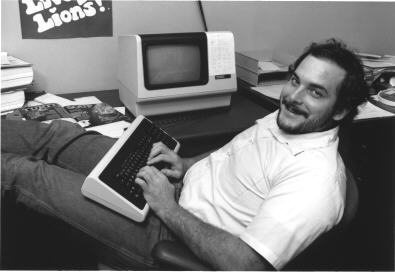
Bob, this is really an honour for me! After Ralph Baer (btw: do you know him personally?) who contacted me some months ago you are the second genius of the classic home video games scene who contacted me!
I do not know him. I didn’t join the Odyssey group until the end of ’81. This was the second Odyssey games group, after Magnvox had shut down the first games group a year or so earlier. I know Ralph Baer was involved in Odyssey1, but I don’t know if he had any involvement in Odyssey2.
I’m certainly not on a level with him. He was an innovator. I wrote a couple of games.
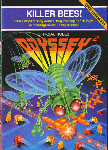 We all enjoyed the game 15 years ago and we still enjoy the game! Killer Bees is a fantastic fast action game for the Odyssey2 and Philips G7000 and one of the best games for this system! Congratulations and thanks for giving us this one!
We all enjoyed the game 15 years ago and we still enjoy the game! Killer Bees is a fantastic fast action game for the Odyssey2 and Philips G7000 and one of the best games for this system! Congratulations and thanks for giving us this one!
I think what made the game is that it is faster paced than the other Odyssey games, and had some features the others didn’t have.
Many of the other games locked the characters into a maze, and I let the character move around at will. Other objects in the game had gradual accelaration, rather than only one or two speeds. Death (of opponents) was a gradual thing, as opposed to an event (even your own death is gradual but a lot of people didn’t notice that). Scoring that used kind of a pinball bonus system.
Killer Bees must have been one of the very first video games with cheat codes, especially on the Odyssey2 and Philips G7000, where these things didn’t exist at all! Still a sensation for me!
The arcade games had them at this time, I’m pretty sure. Probably some other home games did, too. The higher ups frowned upon this sort of thing. The rom space was so small (I think it was 4 KB) that usually your were trying hard to cram stuff into the space available. This kind of stuff was usually seen as a waste of space.
Do you know if there are cheats in other Odyssey2 or Philips Videopac games?
Not too much that I know of. The higher ups really frowned on that kind of thing. I don’t know of any in anyone else’s games, but we usually kept that kind of thing secret.
War Room (ColecoVision) has some features turned on if you enter the right sequence of cities. First you get to see a breif resume of me. Then all the city names change to puns and inside jokes. And an extra city pops up in the ocean, which can provide you with an unlimited supply of fuel.
By the way: All the codes work with both the US Odyssey2 version and the European Philips G7000/G7400 Plus version!
I’m not sure if the two cartridges are the same or not. When a European game came to the states, there was often significant reprogramming necessary. This was mainly due to the fact that the vertical retrace interval in NTSC is much shorter than that in PAL. Most of the changing of screen objects has to be performed suring retrace, and when we got a game from Europe we often had to do some work to get it to work in NTSC. Usually the American games would work in the PAL system without modification.
I was not even aware that the game was being sold in Europe until I visited Eindhoven and a couple of the people I met congratulated me on the game. The sad thing is that Philips decided not to pay me royalties for the European sales, due to their interpretation of my contract.
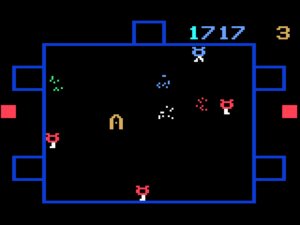 For me it’s a further proof for the speed of this machine. I think the speed in levels 20 and up wouldn’t be possible on an Atari 2600, Intellivision or Colecovision!?
For me it’s a further proof for the speed of this machine. I think the speed in levels 20 and up wouldn’t be possible on an Atari 2600, Intellivision or Colecovision!?
That’s not at all true. The speed is merely a consequence of moving the objects longer distances in each frame. Any of the systems is capable of that.
What I think made it work is that, in most games, the speed of objects was usually a some whole number of pixels per frame, usually only 1 or 2 ppf. In KB, the objects gradually speed up, moving at, say 3/16 ppf, then 4/16, 5/16, and so un up to some high speed like 48/16 ppf. The eye doesn’t notice the gradual speed up (unless your looking for it).
So, there’s an illusion that the processor is running faster, but that’s not the case. If anything, the other systems, especially the ColecoVision, were vastly superior to O2 in terms of either graphics capability or processing power, or both.
Where Odyssey had any advantage at all in hardware was in drawing mazes any putting a few letters or numbers on the screen. Those turned out not to be overly useful in the market.
Did you also write other games for the Odyssey2 or Philips G7000?
Nimble Number NED, which I was not too thrilled about. I did the low level technical work that allowed Type and Tell to put up so many characters. I think that was about it. My follow up after KB was to be called “Clean Up Yer Act”, but we moved on to ColeceoVision before that got very far along.
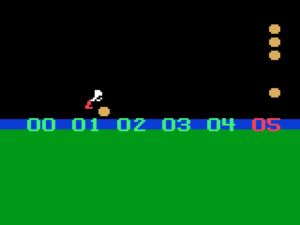
Did you write other games for other classic systems?
War Room, which NAP released for ColecoVision.
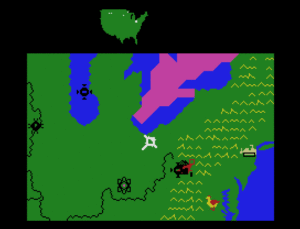
Also, while at Milton Bradley, I was working on some Atari 2600 games. But I took the job with NAP before the 2600 project got very far along. I had helped reverse-engineer the 2600 at MB, and developed a few graphics techniques. At Milton Bradley, I did also two cartridges for the TI Home Computer. These were “Hustle” and “Blasto”. Both of these were arcade games which we licensed. I did not get to do much game design here, but did add some rule changes for versions we played in house.
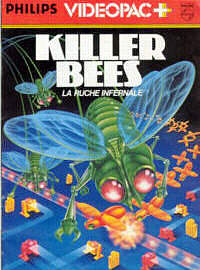 Did you also participate at the European version of the game (Videopac 52+)? Did you draw the background graphics of the + version?
Did you also participate at the European version of the game (Videopac 52+)? Did you draw the background graphics of the + version?
No. As I mentioned above, I had no knowledge of the European release until after the fact.
The background graphics were drawn by Ed Hensley. Ed was a graphic artist in the Knoxville area (where we were located). He did all the artwork for all the games we produced (except for War Room, though I think he did some of it).
The high resolution background graphics for the Philips G7400 (Odyssey3) were really drawn by a team member in the USA? As the Odyssey3 never was released I thought that the additional background graphics for all the G7400 + versions of the games were drawn by European employees of Philips!?
We in the states never got to see or hear much about what went on in Europe. For the most part, these were two different teams that rarely met. When Magnavox pulled the plug in the US, we didn’t have any further
contact with the European group, at least I don’t recall any.
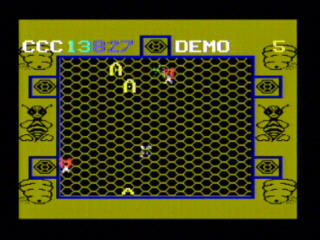 Some of the graphics were done in the US. Killer Bees for certain, and some others but I don’t recall what games we were preparing for both O2 and O3. FlashPoint would have been another. If they produced more games for the O3 in Europe, then they certainly must have done the graphics for those in Europe.
Some of the graphics were done in the US. Killer Bees for certain, and some others but I don’t recall what games we were preparing for both O2 and O3. FlashPoint would have been another. If they produced more games for the O3 in Europe, then they certainly must have done the graphics for those in Europe.
(Editor’s note: The background graphics of the G7400 + version and of the Odyssey3 prototype of Killer Bees are completely different. So it is to assume, that the background graphics for the G7400 version have been drawn in Europe. Refer to the O2 FAQ of Robert D. Kaiser.)
You mentioned two games that haven’t been released, “Clean Up Yer Act” and “Flash Point”. Can you tell us something about them? What happened with these two games? Have they ever been finished?
In “Clean Up Yer Act”, the player would have been a sweeper, moving around a room, collecting trash for points. This was supposed to be kind of a joke since other games had you pick up nice things for points; in this game the “treasures” would be things like coffee grounds, banana peels, etc.
As you picked up the trash, you’d be chased by a broomstick. The broomstick would get gradually faster, until eventually you wouldn’t be able to escape form it, and you’d have to throw a dustball at it. The dustball would temporarily stop it, AND split it into two broomsticks. The two broomsticks would gradually get faster, and the cycle continues. This was inspired somewhat by the Sourcerer’s Apprentice cartoon in Fantasia.
The player would progress from one room to another. First maybe the kitchen (act I), then the living room (act II), and so on. Might have been difficult to come up with enough different rooms and trashes.
The only prototype involved a sweeper and some broomsticks running around. I was working on the “intelligence” of the broomsticks, and I wanted to see how they’d behave. The best analogy is that of a flock of birds or a school of fishes. Though I did accidentally discover an interesting visual effect as the broomstick could kind of wiggle left and right similar to a dog wagging its tail. I think the prototype exists, but I doubt it would be of much interest.
“Flash Point” was further along, but it required an Odyssey3. No Odyssey2 version was to be made because the game elements used the graphic capabilities of the O3. In fact, I think Flash Point was pretty much fully playable.
As I remember it, Flash Point was inspired by the activity level of Rex’s favorite arcade game, which was Defender. I think he used both joysticks just the way Defender did (one for movement, one for firing), so you could shoot in one direction while running in another. You had a variety of different types of enemies, each with a specific behavior. The pace was frenetic (I loved it!).
I’m not sure why the Dutch group would not have marketed this after the US group was snuffed out. Perhaps it was because it was Odyssey3 only (did they ever market Odyssey3-only games?), or maybe because you needed something to hold the two joysticks together. Or maybe they never even knew about it. Or, at the time, they seemed to be more interested in slower moving games and the pace of Flash Point may have been too fast.
(Editor’s note: Wow, “Clean Up Yer Act”, another undiscovered Odyssey2 prototype!!! Well, referring “Flash Point”: Yes, at the end of the system’s livespan Philips released two games that were G7400-only – Videopac 59+ Helicopter Rescue and Videopac 60+ Transamerican Rally. So this was probably NOT the reason why “Flash Point” hasn’t been released here in Europe. I think the problem was that you had to use both joysticks for the game. The Odyssey3 prototype has a built-in joystick holder, but the G7400 hasn’t!)
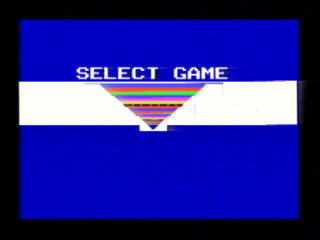 Speaking of visual effects: Is the title screen of Killer Bees (triangle with the pulsating colors) a company logo of you or does it mean something other?
Speaking of visual effects: Is the title screen of Killer Bees (triangle with the pulsating colors) a company logo of you or does it mean something other?
(Chuckle) Interesting you should ask. One of my projects was to try to see if there was any way to ‘beat the
hardware’ to see if we could get more impressive graphics out of it. The Atari 2600 system was not designed do to the kind of things people were doing with it, but because it was a simple architecture, it turned out that
with a lot of work you could reuse objects several times on the screen to get better graphics.
I did a lot of experiments with the O2 hardware to see what we could do. The answer was not much. The 8048 was too slow. Plus the CPU instruction cycle was not an integer divisor of the TV scan rate (at least not in NTSC, I don’t know about PAL). If it had been an integer divisor, this would mean that we could use the processor to change the background colour on a particular instruction cycle, and could have done some better graphics. Since it was not an integer divisor, this meant we could not hit the same pixel on each frame (it was a four frame cycle).
Anyway, what I DID discover I could do was that triangle. We thought it could be an attention grabber, that it gave the illusion that the O2 could do some better graphics, and probably would have used it in subsequent
games. But Killer Bees was pretty much the last O2 game our group produced.
Are you/have you been employee of NAP/Magnavox or did you just write the game and offer it to them?
I was hired by Magnavox in ’81, and worked for them until ’88. They pulled the plug on video games in ’84 (maybe it was ’85). Most of us worked on a self-contained word processor called “The VideoWriter” after that.
You mentioned Milton Bradley before. Was MB related to Magnavox, as Magnavox hired you from MB? Did you start your career at MB? And did you work for MB after the Odyssey project again? Did Magnavox say “we need some programmers for the Odyssey2 project” to MB and they sent them?
No connection between MB and Magnavox, except that three of us in the Odyssey group had worked together at MB.
I started at MB fresh out of college in ’79. I had worked on a couple other programming jobs during school, though, so it’d be hard to say that’s where my career started. I was hired at MB to do programming related to speech synthesis, but I saw (at my interview) they were working on video games (for the soon to be released TI home computer) and that was the clincher. I was only there two years – the second year of which was video game stuff.
Sam Overton had worked for Magnavox before coming to MB, and when he returned to Magnavox, myself and Jim Butler soon followed. It was a great opportunity – plus better pay in a region where it was cheaper to live.
You mentioned that Sam Overton wrote most of the Odyssey2 sports games. I thought that most of the (earlier) Odyssey2 games were written by Ed Averett? How could then Sam Overton write most of the sports games? Or was Ed leader of the first Odyssey2 games group and so all the games are known to be written by him? Do you still have contact to Ed?
Sam was a member of the original Odyssey programming group, and did the lion’s share of the early games. Magnovox pulled the plug around ’78, deciding that video games would not help sell TVs(!).
As I understand it, Ed was the Intel rep that had sold the chips to Magnavox (the chips for Odyssey). When Magnavox pulled the plug, Ed began writing games himself, and got Magnavox to produce them. So Ed wrote most of the remaining games, and I would guess overall that he wrote about half of all Odyssey games. If you count them by sales, he probably did much more than half.
In other words, Ed had the forsight to see that video games could be lucrative in their own right, while Magnavox’s goal was to use them to sell TVs. For example, when the original Odyssey console (the pong-like game) was introduced, I saw one in Sears, and wanted to buy one. But the literature with the game hinted that it would only work on a Magnavox TV. We didn’t have a Magnavox TV, so I didn’t buy the game console!
Anyway, Sam returned in ’81 (with me soon on his heels). This was shortly after Philips purchased the Magnavox TV brand, as well as Sylvania and Philco, and set up a new facility in Knoxville. They reopened the games group, and Sam was brought in to head up the group. From ’81 til the second plug pulling, we wrote games, and Ed continued to write games. Sam was the only link between the two games groups, though possibly some of the group that designed the hardware might have been retained.
If I knew where Sam was, I’d get you in touch with him. He’d be able to fill in a lot more of the early details.
(Editor’s note: In any case it is very interesting who did which game for the Odyssey2 in its livespan. As soon as my O2 collection is mostly complete, I will create a list, with author, year, memory size, etc.)
Do you know Ed Averett personally? He programmed most of the O2/G7000 games, as you know. Ralph Baer told me that he had contact with him shortly.
I met Ed several times during the Odyssey project. He lived in Chattanooga at the time (I suspect he still does). But I have not seen him since the end of the project. Ed’s a pretty nice guy, by the way.
Did you have special development kits for the Odyssey2? How did they look like?
We had an Odyssey2 board set on a piece of plywood. We used HP 64000 devlopement/emulator systems for most of the project. I think we would have been better off with a PC and a simpler emulator. The HP wasn’t intended to be a general purpose computer, and it was quite difficult to write the kind of little tools we needed. And of course we each had a Magnavox TV in the office.
Maybe you could tell us something about programming video games in the early 80s!?
Certainly a lot different than it is now!
First off, most games were a one man effort. You came up with an idea, presented it to the brass, and then wrote it. You’d get lots of suggestions along the way, but it was pretty much your baby.
I remember that it was difficult to convince the brass at Odyssey to do a game unless you were copying a successfull arcade game. This says a lot about how the KC Munchkin case came about.
And the hardware was not very sophistocated. Consumer electronics in those days meant “make it as cheap as you can”.
Are you still writing computer/video games?
No. When Philips got out of the business in ’84/’85 I considered other companies. I discovered at that time that most other programming jobs considered my game programming experience as worthless (I’m not sure if the industry would be any different today). That and the fact that most of the game jobs were on the west coast (and I didn’t think I could afford to live there) convinced me to switch to other programming.
Now I do embedded programming related to digital TV.
Do you still own an Odyssey2 system? Do you still play O2 games?
I have an O2 and a ColecoVision sitting in boxes in the closet. I have not tried either of them out for years.
I’m really more into board games than video games these days. In the late 80’s when all the arcade games seemed to be kick boxing variants, I stopped visiting the arcades. I always was more of a strategy/logic fan than shoot’em up games. My favourite arcade games were Centipede, Robotron, and Qix. At one point I purchased several used arcade games (Robotron and Qix among them), and played these quite a bit.
I do have a Nintendo system (not Super Nintendo) and a game boy. Even with these, I got rather disillusioned because it was hard to find good games. Not that good games weren’t available, just that some many games were available and it was hard to know which were any good. Often, it seemed, the controls were poorly implemented (a good example of this is Tetris for Nintendo, which does not play as well as Tetris on my Mac). Mostly I play Dr. Mario while riding an exercise bike. Sometimes I’ll play some logic-type games on my Mac. But usually I spend more time creating stuff for my own enjoyment.
Many thanks for answering all these questions, Bob! I hope we didn’t bother you, but it is so fascinating having contact to the people who wrote our favourite games in those days!
It’s no bother. It’s like bringing back a past life.
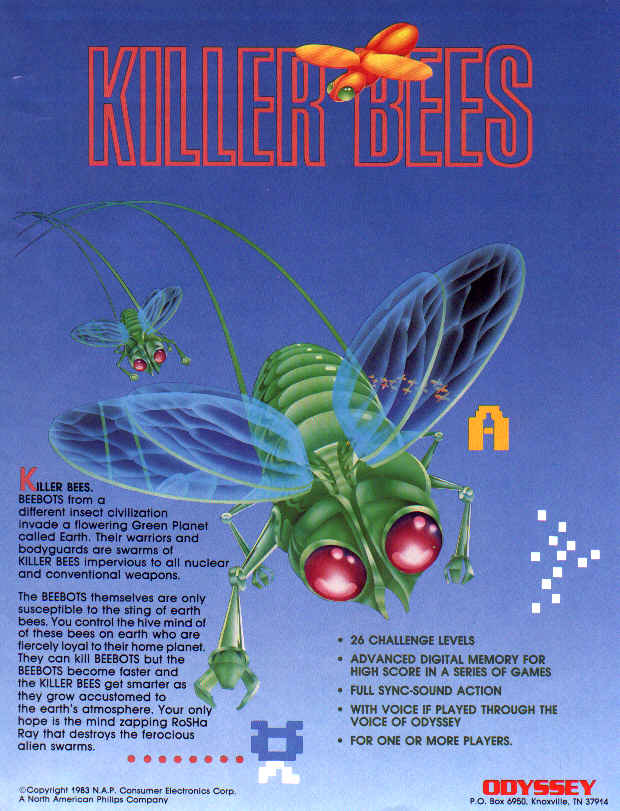
Content thanks to WayBackMachine and Dieter Koenig.
